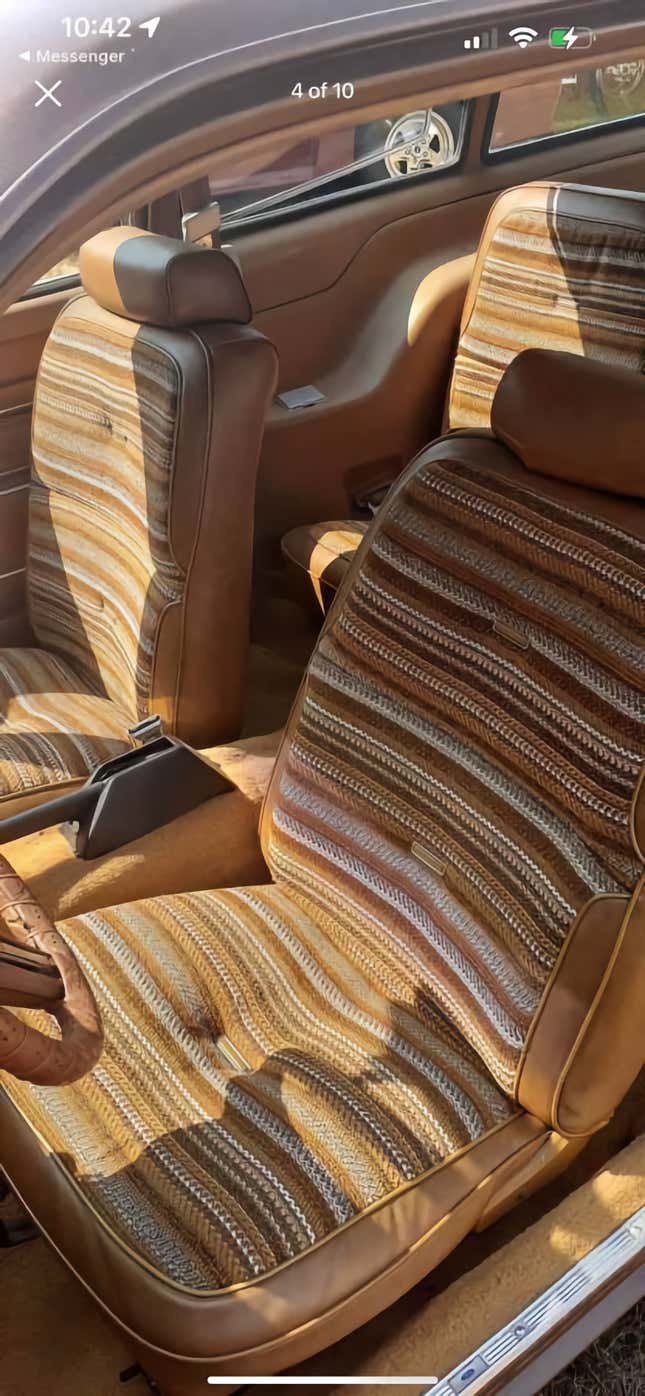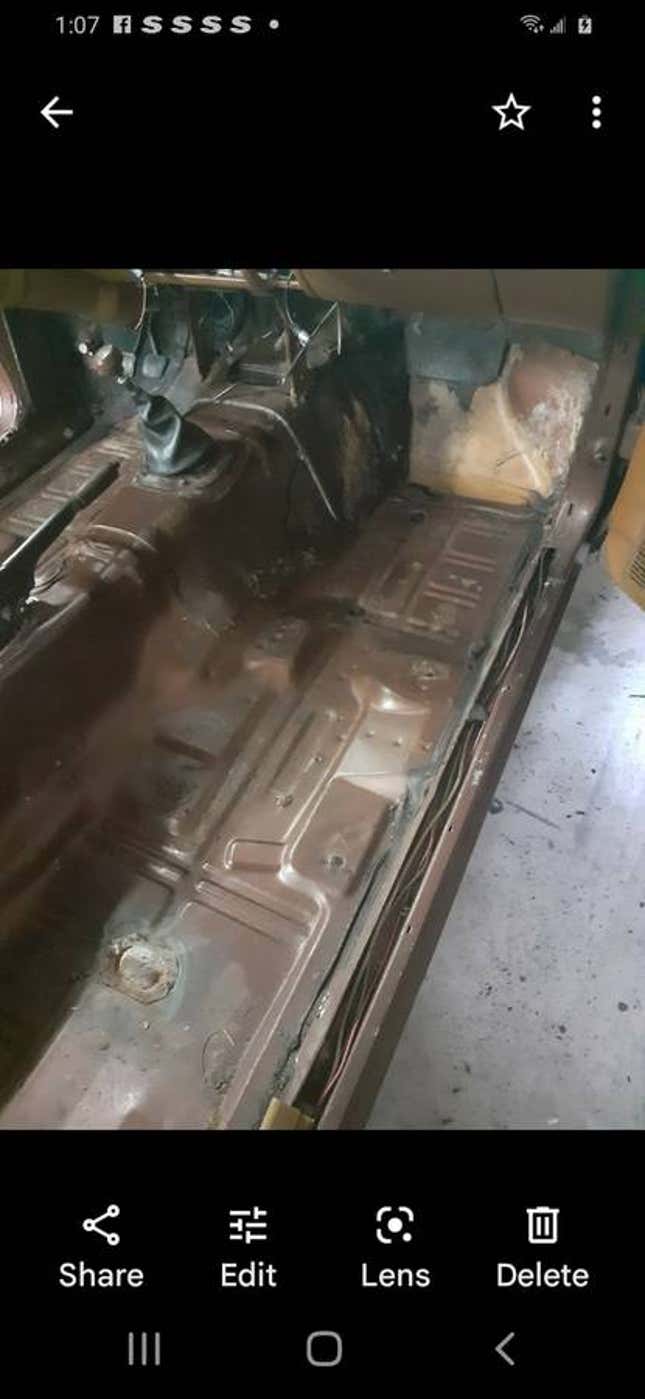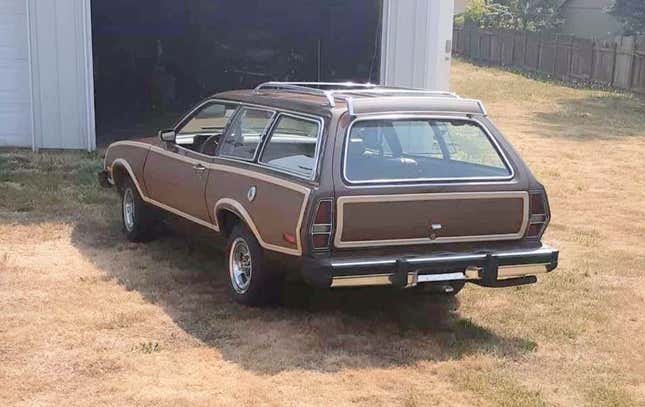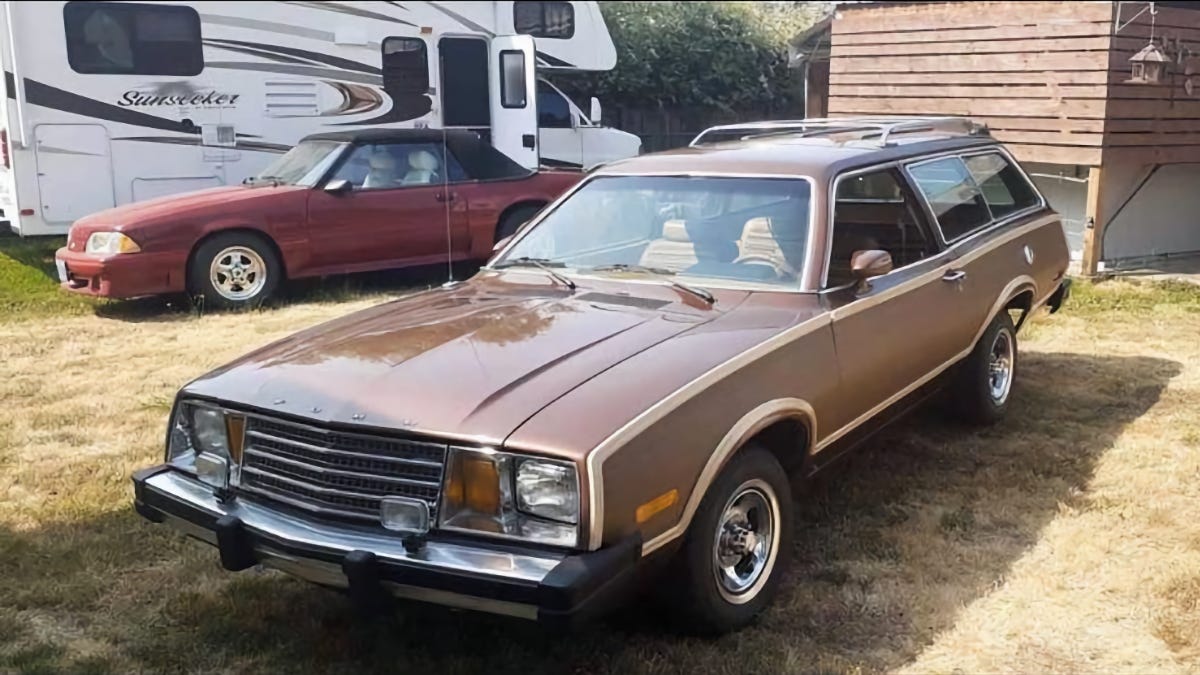Today’s Nice Price or No Dice Pinto Squire has wonderful woodgrain on its sides and hatch. Let’s see if it’s priced to make a buyer say, “Yes, I would.”
The 2000 Mercedes-Benz ML 55 AMG we looked at yesterday was a bit of an enigma: a sport utility with some actual sport to its name. That schism in form versus function was impressively mirrored in the comments, with some of you opining the SUV’s $9,999 price tag was a good deal for a desirable truck and others weighing in that better options are to be had at that price. In the end, it all came together, but not in the ML’s favor, with a 54 percent No Dice loss.
Let’s look back on a little bit of Ford history. When the company introduced the Mustang in April of 1964, it didn’t just create a new category of car—that of the small, affordable personal coupe—it also set off a galloping wave of horse-related names for other products, each hoping to capture some of the Mustang’s mythos. That resulted in venerable names like Bronco, Maverick, and the object of our attention today, the Pinto.

Now, before we delve into the specifics of this 1980 Ford Pinto Squire wagon, we need to point out that this being the wagon absolves it of having a higher than average chance of fire in a rear-end collision. That issue, which resulted in a number of likely avoidable deaths and injuries as well as the tainting of Ford’s reputation due to foot-dragging of a recall, was limited primarily to the smaller hatchback and sedan models. As such, it would not be appropriate to jokingly refer to the car’s Di-Noc woodgrain siding as “kindling.”
This Pinto comes from the last of the model’s nine-year run. It sports a redesigned nose with rectangular headlamps that first appeared in 1979 and made for a significant change in the car’s appearance over earlier cars.
Other changes to see the Pinto out the door included a redesigned instrument cluster and the dropping of the available but woefully anemic Cologne V6. This car, like all other 1980 Pintos, has the 2.3-liter SOHC four, an engine that debuted in the model half a decade earlier and is so closely associated with it that it maintains the nickname “Pinto Four.” While later turbocharged versions made upward on 175 horsepower, here, in carbureted and naturally aspirated form, it makes a somewhat sodden 88 horsepower and 119 lb-ft of torque. A four-speed manual directs that output to the live rear axle.
Other notable firsts for Ford’s U.S. arm that can be claimed by the Pinto include the adoption of rack and pinion steering and the use of vinyl seam sealer on body joints to improve sound deadening.

According to the ad, this Pinto Squire enjoys a new coat of paint, fresh woodgrain vinyl siding, and, on the inside, new carpets. Despite the updated nose and bumpers, it still maintains a distinctly ’70s vibe, looking all the world like a Country Squire that’s gone through the Shrinky-dink machine, and having lost two doors in the process. The roof rack even has a very ’70s extended “wing” on the back, intended to blow air at speed over the rear glass keeping it clean. The ad points out the polished factory alloys, which also look age-appropriate and, to be honest a bit upscale.
The cabin is where this Pinto party really gets started though. This car comes from the era when performance did not exist, and so manufacturers attempted to make up for that lack by imbuing their cars and trucks with snazzier looks both inside and out by way of decals and gaudy upholstery.
That’s evident here with button-tufted seats that feature a Southwestern pattern in an explosion (Oops, sorry for that) of impressively expressive browns and tans.
It all looks to be in great shape, and the seller nicely includes pictures in the ad of the car in mid-recarpeting, showing the floorboards to be solid. The seller claims the car has 96,000 miles on the clock and a clean title. What should something like this reasonably cost?

Per the seller, $7,800. The ad says that the price has been lowered and claims that it’s car show time for the car. What do you think? Does that seem like a reasonable deal for a classic Pinto wagon with wood? Or does that price tag mean those car shows will just have to wait?
You decide!
Portland, Oregon, Craigslist, or go here if the ad disappears.
H/T to Bill Lyons for the hookup!
Help me out with NPOND. Hit me up at [email protected] and send me a fixed-price tip. Remember to include your Kinja handle.

